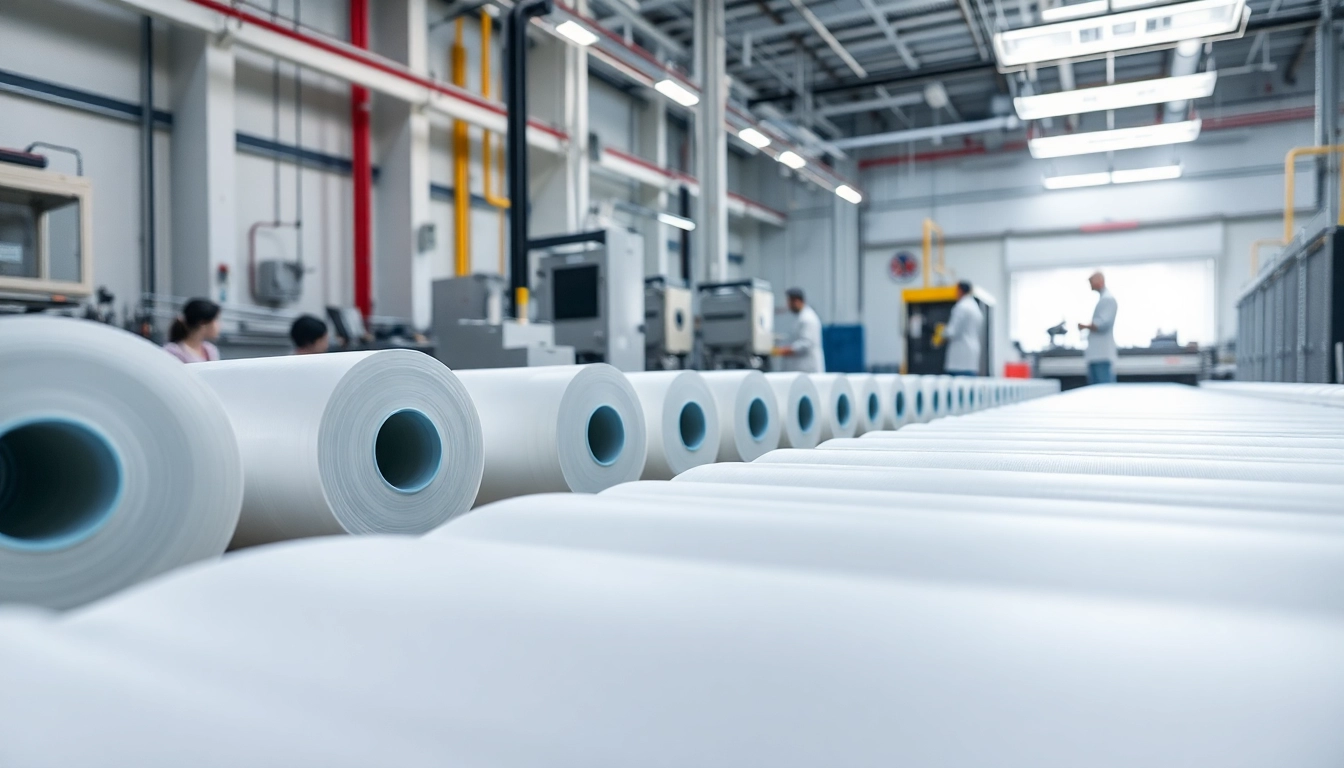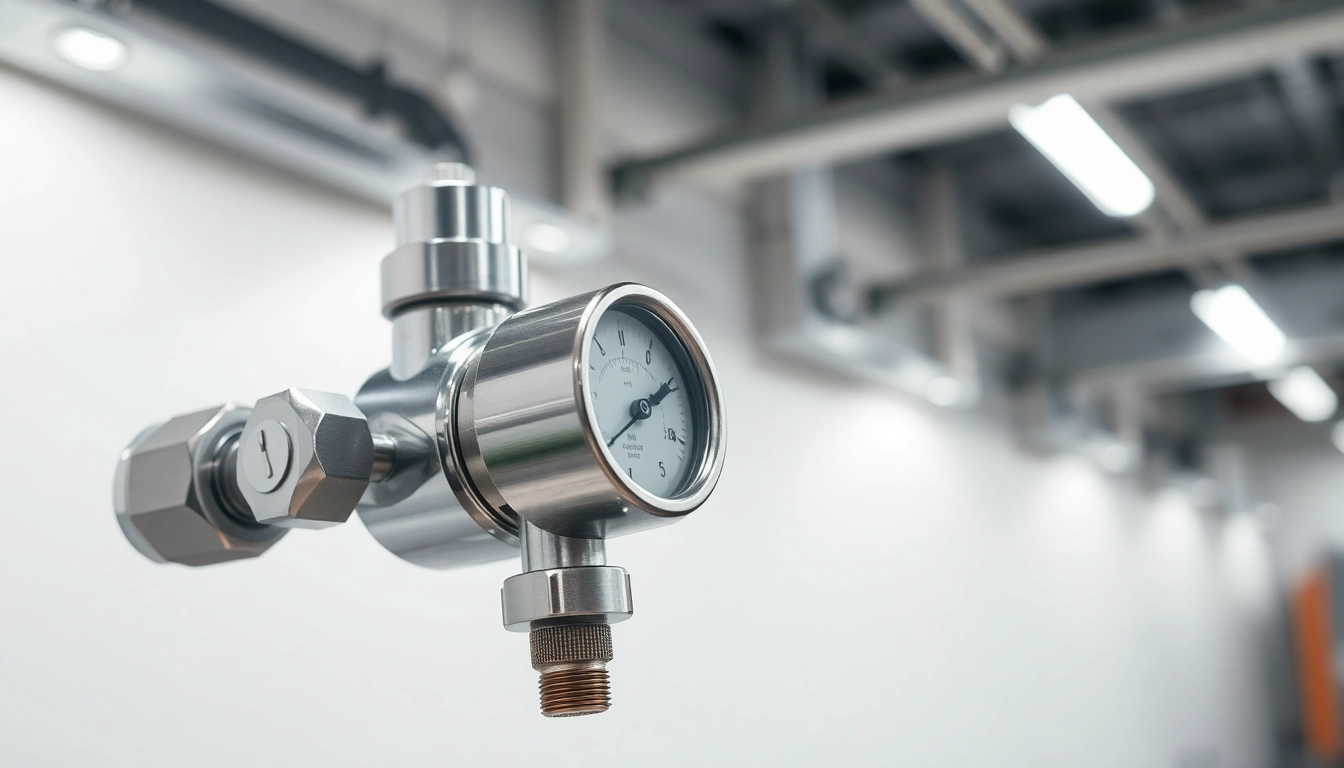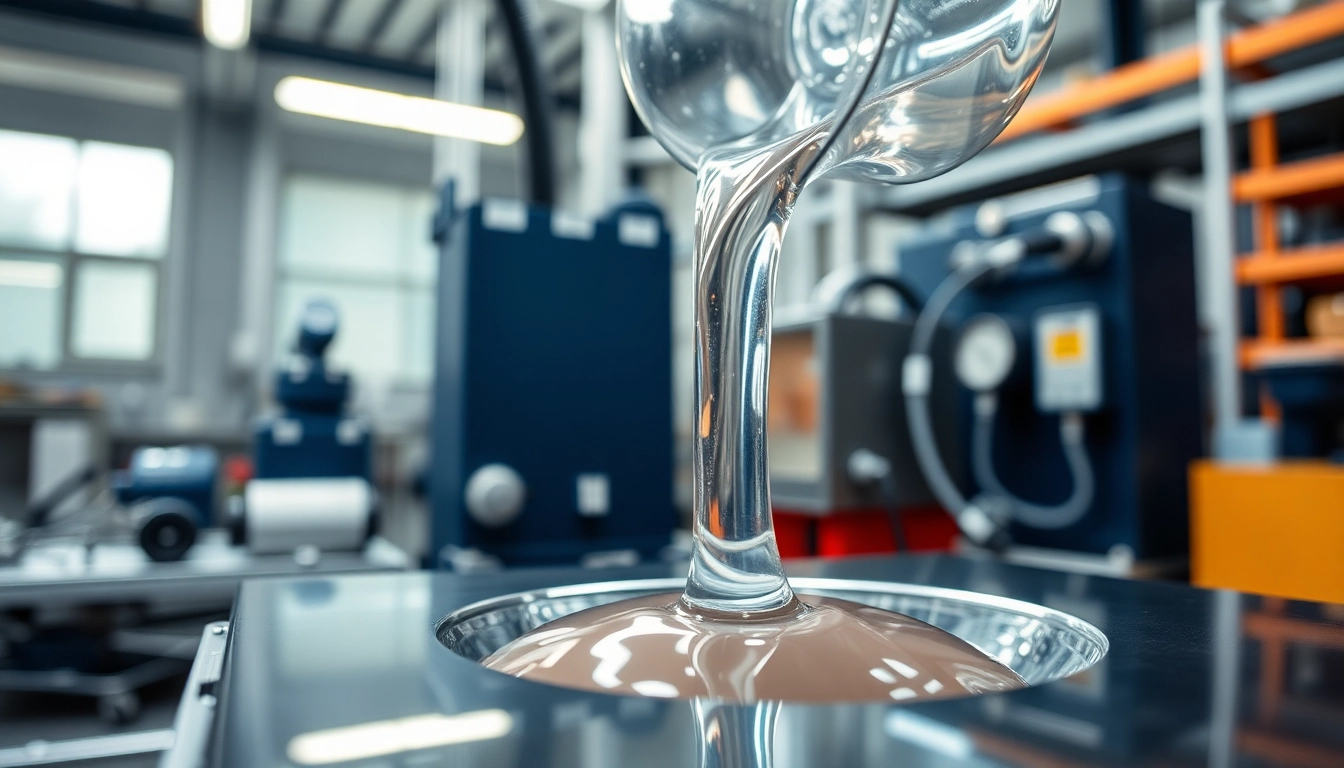What are Epoxy Prepregs?
Definition and Composition
Epoxy prepregs, or pre-impregnated fiber reinforcement materials, consist of reinforcing fibers that have been pre-impregnated with a thermoset epoxy resin system. This process ensures that the fibers, such as carbon or fiberglass, are fully saturated with the resin which becomes the matrix that binds the fibers together once cured. The careful balance of resin and fiber content is critical to achieving optimal performance characteristics in the final composite material. The use of epoxy resin in prepregs is particularly valued for its excellent adhesive qualities and superior mechanical properties. For those interested in more technical insights, you can explore epoxy prepregs to understand the diverse formulations available.
Types of Epoxy Prepregs
Epoxy prepregs come in various types tailored for specific applications and performance requirements. Typically, they can be categorized based on fiber reinforcement types:
- Carbon Fiber Prepregs: Known for their high strength-to-weight ratio, carbon fiber prepregs are lightweight and provide exceptional stiffness.
- Glass Fiber Prepregs: These are often less expensive and provide good strength and durability, making them suitable for many applications including automotive and marine.
- Kevlar Fiber Prepregs: Kevlar is renowned for its impact resistance and is often used in protective gear and aerospace applications.
Additionally, there are variations in the epoxy resin systems themselves, which can include toughened systems for improved impact resistance or specialized formulations for high-temperature applications.
How Epoxy Prepregs are Made
The manufacturing of epoxy prepregs involves several key steps:
- Fiber Preparation: Reinforcing fibers are prepared according to specific standards and requirements.
- Resin Impregnation: The fibers are then saturated with a resin system, typically through a process known as “hot-melt” or “solvent-based” impregnation. In hot-melt, the resin is heated until it is liquid, allowing it to flow and thoroughly impregnate the fibers.
- Curing Process: Curing can occur partially during impregnation or may require additional heating during the manufacturing of composite parts.
- Cooling and Storage: Finally, the impregnated material must be cooled and often stored at low temperatures to prevent premature curing.
Employing state-of-the-art techniques and equipment for each step allows manufacturers to produce epoxy prepregs with consistent quality and performance.
Key Benefits of Using Epoxy Prepregs
Strength and Durability
One of the primary advantages of epoxy prepregs is their impressive strength and durability. When cured correctly, these materials display exceptional mechanical properties, including high tensile strength and rigidity, which are crucial for demanding applications like aerospace and automotive industries. Moreover, the chemical resistance of epoxy resins contributes to the longevity of components made with prepregs, allowing them to withstand harsh environments.
Precision and Consistency
Epoxy prepregs offer superior dimensional stability and uniformity, which is vital for applications in precision engineering. The controlled resin-to-fiber ratio ensures consistent quality, reduces waste, and decreases the likelihood of defects in the final product. This reliability is especially important in high-performance sectors where even minor inconsistencies can lead to catastrophic failures.
Environmental Resistance
The cured epoxy matrix provides excellent resistance to moisture, heat, and chemicals, making prepregs an ideal choice for applications exposed to diverse environmental conditions. This characteristic minimizes maintenance costs and enhances the overall lifespan of components prepared with epoxy prepregs, ensuring optimal performance over time.
Applications of Epoxy Prepregs in Various Industries
Aerospace Applications
In the aerospace sector, epoxy prepregs are extensively employed due to their lightweight and high-strength characteristics. They are utilized to fabricate various components including aircraft wings, fuselages, and various structural parts. These materials play a crucial role in enhancing fuel efficiency while adhering to stringent safety standards.
Automotive Industry Use
The automotive industry increasingly incorporates epoxy prepregs to manufacture lightweight components that contribute to improved fuel efficiency and reduced carbon emissions. Applications include body panels, reinforcement structures, and other composite components designed to withstand substantial forces while maintaining low weight. The shift towards electric vehicles has accelerated the demand for these materials due to their performance benefits and recyclability.
Sports Equipment Manufacturing
Within sports equipment manufacturing, epoxy prepregs are favored for creating high-performance items such as bicycle frames, golf clubs, and sporting goods which require a combination of lightness and resilience. Athletes benefit directly from the enhanced performance characteristics that these materials provide, translating into improved competition outcomes.
Challenges When Working with Epoxy Prepregs
Storage and Handling Considerations
One significant challenge when working with epoxy prepregs is their sensitive nature regarding storage and handling. Due to their pre-impregnated status, they must be stored at low temperatures to prevent curing. Additionally, extensive handling is discouraged to avoid contaminating the surface, which could impede bonding during the curing process.
Curing Process Insights
The curing process for epoxy prepregs can also present challenges. Achieving the desired mechanical properties requires precise control over temperature and time. Manufacturers must strike a balance to avoid under-curing, which can lead to weak bonds, or over-curing, which may embrittle the material. Rigorous testing and a clear understanding of the material behavior are essential to mitigate these risks.
Cost Challenges
While epoxy prepregs provide numerous benefits, the initial costs associated with the materials and the processing can be higher than traditional fiberglass composites. Manufacturers must weigh these costs against the long-term advantages of performance, durability, and weight savings that epoxy prepregs offer.
Future Trends in Epoxy Prepreg Manufacturing
Advancements in Material Technology
As manufacturing technology progresses, we can expect significant advancements in epoxy prepreg formulations. Innovations may include the development of hybrid materials that combine multiple fiber types or improved resin systems that enhance performance characteristics such as heat and impact resistance. These advancements aim to further broaden the applicability of epoxy prepregs across various industries.
Sustainability Practices
There is a growing emphasis on sustainability within the manufacturing sector, and epoxy prepreg production is no exception. The industry is increasingly focusing on eco-friendly practices, such as using bio-based resins and developing recycling methods for composite materials. This trend reflects the broader societal shift towards reducing environmental impact while maintaining the high-performance standards that users expect.
Market Forecasting
Market forecasts suggest that the demand for epoxy prepregs will continue to rise, particularly in light of current trends towards lightweighting and increased performance in various sectors. As new applications are discovered and the associated technologies mature, epoxy prepregs are poised to play a pivotal role in the future of advanced manufacturing. Industry stakeholders will need to adapt strategies to capitalize on emerging opportunities while navigating challenges to create value through innovation.



